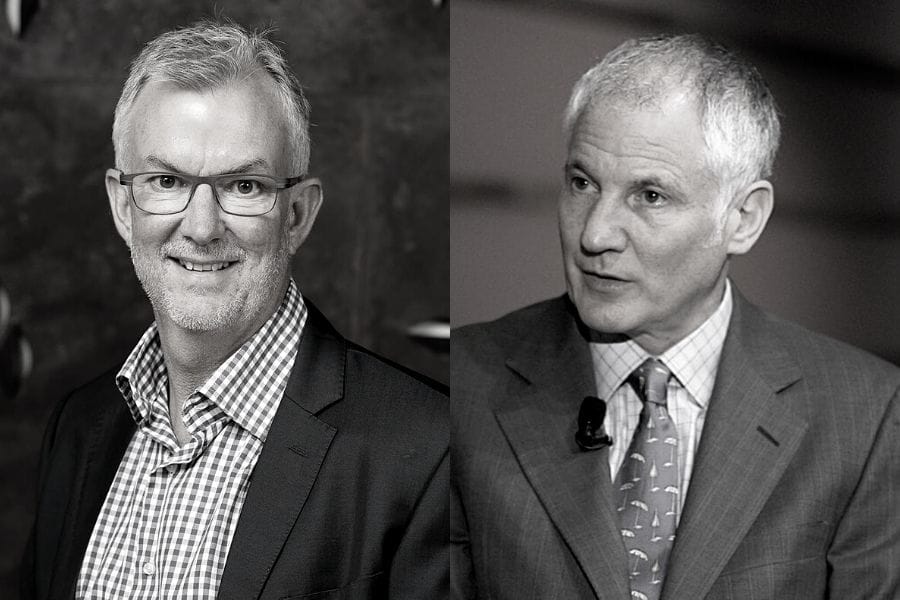What would be the implications of a large number of global asset owners attempting to become 100% sustainable by 2030?
This is an important question and opportunity emerging out of the work we did over the past year as members of the New York State Common Decarbonization Advisory Panel whose recommendations were just released this week in a 38-page report.
Appointed roughly a year ago by Governor Andrew Cuomo and State Comptroller Thomas DiNapoli, this panel consisted of myself, Alicia Seiger of Stanford, George Serafeim of Harvard, Tim Smith of Walden Asset Management, former SEC commissioner Bevis Longstreth and chairperson Joy Williams from Canada, now with Mantle314. The panel met a number of times and participated in a variety of conference calls including with leading practitioners from large financial institutions who shared their latest work on sustainable investing, a field where new strategies constantly emerge.
The panel came into being out of goal setting statements made a little over a year ago as we focused on the question of divestment from fossil fuel production, especially as was being put forward by New York City Mayor Bill de Blasio and City Comptroller Scott Stringer, alongside supportive statements from Governor Cuomo on divestment which continue to emerge while the Comptroller was and remains an advocate for shareholder engagement.
Regardless of the New York City statement on divestment as a goal, among the five separate pension funds within the City system, two of those funds, those for retired police and firemen immediately rejected divestment as an option, but the largest two of the five funds remain in play. Further, the New York State Common Retirement Fund was and remains a global leader on shareholder engagement, as the recommendations report linked above and its accompanying notes provide in specific detail.
With the challenge at hand of unifying different perspectives, and after significant deliberation, a number of important dynamics emerged. Most significantly, what allowed unanimous agreement among the panelists to emerge surrounding these final recommendations was a collaborative desire to find and establish common ground.
The panelists in some cases came to this table with different priorities. Tim Smith is an engagement advocate, perhaps the most vociferous of all. Bevis Longstreth has been outspoken on his calls for divestment, yet all of us tried to see if we could come to a consensus. In this age of dozens of US presidential candidates as we head towards 2020, and a lack of coalescing around a specific Brexit plan, it was heartening to be part of an attempt to reach consensus, especially as it actually started to work.
We also operated under the assumption that what we came up with had to fit neatly within the remit of Comptroller DiNapoli being in effect the sole fiduciary for the over one million retired employees of the State of New York and the roughly $210 billion being managed on their behalf, making fiduciary responsibility a first and overarching priority for the recommendations and for which it remains.
In this regard it became clear that, as we looked forward even a little bit, that the fiduciary responsibility of the fund was to consider what is coming from a climate change perspective, and make fully sure that it was prepared on two fronts, those being related to a) physical risks, and b) transition risks.
“The number one recommendation we arrived at for the fund was for it to seek to become 100 per cent sustainable by 2030, with an accompanying definition of what that means specifically.”
The climate science is clear and 100 per cent agreed – any sceptical views have been fully debunked and the best climate modeling keeps being found to have been very accurate in retrospect, and these models are only getting better with time. However, it is less clear what any specific asset owner can and should do about this, and so we set out to establish a framework for what that starts to look like (and please do read the full set of recommendations for all the specific steps that are outlined in full that resulted from our analysis and work).
The number one recommendation we arrived at for the fund was for it to seek to become 100 per cent sustainable by 2030, with an accompanying definition of what that means specifically. We recognise this is a significant ask, but it will be vital to achieve in order to best protect the financial interests of beneficiaries.
Also, through my initial suggestion the concept of minimum standards emerged as a way of baking divestment into the investment process.
We mostly take for granted that there are food or product safety minimum standard requirements that go into what we eat or consume, yet for whatever reason we don’t have minimum standards on what we invest in.
Surely it makes sense to have minimum standards on what we own as well, so that when both engagement and the business case are seen to have failed, large asset owners and others so minded aren’t left stuck holding onto losers to the detriment of beneficiaries.
There is a history of this sort of risk of passive being missed, including by NYSCRF, most recently in the early 2010s when they were a large holder of Peabody Energy, which traded at $70 a share before proceeding to go bankrupt without a mechanism for protecting shareholder value up until it fell out of the S&P500. Surely there’s a better way, and the work of Norges Bank is a clear example of this sort of application of minimum standards in practice today that all asset owners can take from.
Minimum standards then become an opportunity to bake divestment into any investment process, while satisfying both engagement focused asset owners, as well as those who focus on divestment and it is exciting to see this emerge in the public discourse through these recommendations.
In addition, our recommendations as a panel called for a specific climate-focused program and resources for such an effort. In general, we find asset owners are resource challenged in general and especially on sustainability initiatives, but this needs to change or the best people involved may not be necessarily incentivised to stay. It is one thing to build a solid plan that protects and enhances shareholder value surrounding issues of climate and sustainability, and another to execute that plan well. Education and proper incentives are therefore also important to establish across all of NYSCRF, so that the urgency of implementing our recommendations are understood.
We also make clear in the recommendations that what have become somewhat understandable tendencies towards passive approaches being taken by asset owners to public equity allocations now need to be questioned, especially perhaps given future concerns on issues of transition risk, whether it’s due to the rise of electric cars, or utilities going bankrupt, or due to various potential forms of future stranded assets or the implementation of future policies.
Overall, the recommendations speak for themselves and for the panelists as a group, so please do read them, think about them, and most of all adapt and adopt them. It has been an honor to serve the Comptroller and his team; they have a lot of work to do, and so do we all.
Cary Krosinsky was a member of the New York State Common Decarbonization Advisory Panel, set up to advise the Comptroller, as trustee of the $209.1 billion New York State Common Retirement Fund, on how best to mitigate investment risks stemming from climate change and maximise opportunities from the new, low-carbon economy.




